Simultaneous mutations in multi-viral proteins are required for soybean mosaic virus to gain virulence on soybean genotypes carrying different R genes
- PMID: 22140577
- PMCID: PMC3227670
- DOI: 10.1371/journal.pone.0028342
Simultaneous mutations in multi-viral proteins are required for soybean mosaic virus to gain virulence on soybean genotypes carrying different R genes
Abstract
Background: Genetic resistance is the most effective and sustainable approach to the control of plant pathogens that are a major constraint to agriculture worldwide. In soybean, three dominant R genes, i.e., Rsv1, Rsv3 and Rsv4, have been identified and deployed against Soybean mosaic virus (SMV) with strain-specificities. Molecular identification of virulent determinants of SMV on these resistance genes will provide essential information for the proper utilization of these resistance genes to protect soybean against SMV, and advance knowledge of virus-host interactions in general.
Methodology/principal findings: To study the gain and loss of SMV virulence on all the three resistance loci, SMV strains G7 and two G2 isolates L and LRB were used as parental viruses. SMV chimeras and mutants were created by partial genome swapping and point mutagenesis and then assessed for virulence on soybean cultivars PI96983 (Rsv1), L-29 (Rsv3), V94-5152 (Rsv4) and Williams 82 (rsv). It was found that P3 played an essential role in virulence determination on all three resistance loci and CI was required for virulence on Rsv1- and Rsv3-genotype soybeans. In addition, essential mutations in HC-Pro were also required for the gain of virulence on Rsv1-genotype soybean. To our best knowledge, this is the first report that CI and P3 are involved in virulence on Rsv1- and Rsv3-mediated resistance, respectively.
Conclusions/significance: Multiple viral proteins, i.e., HC-Pro, P3 and CI, are involved in virulence on the three resistance loci and simultaneous mutations at essential positions of different viral proteins are required for an avirulent SMV strain to gain virulence on all three resistance loci. The likelihood of such mutations occurring naturally and concurrently on multiple viral proteins is low. Thus, incorporation of all three resistance genes in a soybean cultivar through gene pyramiding may provide durable resistance to SMV.
Conflict of interest statement
Figures

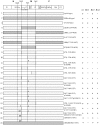

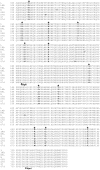
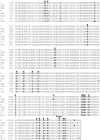


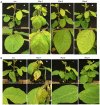

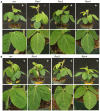
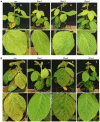
Similar articles
-
Decades of Genetic Research on Soybean mosaic virus Resistance in Soybean.Viruses. 2022 May 24;14(6):1122. doi: 10.3390/v14061122. Viruses. 2022. PMID: 35746594 Free PMC article. Review.
-
Evaluation of North American isolates of Soybean mosaic virus for gain of virulence on Rsv-genotype soybeans with special emphasis on resistance-breaking determinants on Rsv4.Mol Plant Pathol. 2012 Dec;13(9):1077-88. doi: 10.1111/j.1364-3703.2012.00817.x. Epub 2012 Jul 24. Mol Plant Pathol. 2012. PMID: 22827506 Free PMC article.
-
Fitness penalty in susceptible host is associated with virulence of Soybean mosaic virus on Rsv1-genotype soybean: a consequence of perturbation of HC-Pro and not P3.Mol Plant Pathol. 2013 Dec;14(9):885-97. doi: 10.1111/mpp.12054. Epub 2013 Jun 19. Mol Plant Pathol. 2013. PMID: 23782556 Free PMC article.
-
Adaptation of Soybean mosaic virus avirulent chimeras containing P3 sequences from virulent strains to Rsv1-genotype soybeans is mediated by mutations in HC-Pro.Mol Plant Microbe Interact. 2008 Jul;21(7):937-46. doi: 10.1094/MPMI-21-7-0937. Mol Plant Microbe Interact. 2008. PMID: 18533834
-
Genomic blueprints of soybean (Glycine max) pathogen resistance: revealing the key genes for sustainable agriculture.Funct Plant Biol. 2024 Apr;51:FP23295. doi: 10.1071/FP23295. Funct Plant Biol. 2024. PMID: 38669462 Review.
Cited by
-
Citrus tristeza virus: Evolution of Complex and Varied Genotypic Groups.Front Microbiol. 2013 Apr 23;4:93. doi: 10.3389/fmicb.2013.00093. eCollection 2013. Front Microbiol. 2013. PMID: 23630519 Free PMC article.
-
Decades of Genetic Research on Soybean mosaic virus Resistance in Soybean.Viruses. 2022 May 24;14(6):1122. doi: 10.3390/v14061122. Viruses. 2022. PMID: 35746594 Free PMC article. Review.
-
Pathogenicity and genome-wide sequence analysis reveals relationships between soybean mosaic virus strains.Arch Virol. 2022 Feb;167(2):517-529. doi: 10.1007/s00705-021-05271-z. Epub 2022 Jan 13. Arch Virol. 2022. PMID: 35024966 Free PMC article.
-
Amino acid substitution in P3 of Soybean mosaic virus to convert avirulence to virulence on Rsv4-genotype soybean is influenced by the genetic composition of P3.Mol Plant Pathol. 2015 Apr;16(3):301-7. doi: 10.1111/mpp.12175. Epub 2014 Aug 24. Mol Plant Pathol. 2015. PMID: 25040594 Free PMC article.
-
Deep sequencing leads to the identification of eukaryotic translation initiation factor 5A as a key element in Rsv1-mediated lethal systemic hypersensitive response to Soybean mosaic virus infection in soybean.Mol Plant Pathol. 2017 Apr;18(3):391-404. doi: 10.1111/mpp.12407. Epub 2016 Jun 10. Mol Plant Pathol. 2017. PMID: 27019403 Free PMC article.
References
-
- Moury B, Caromel B, Johansen E, Simon V, Chauvin L, et al. The helper component proteinase cistron of Potati virus Y induces hypersensitivity and resistance in potato genotypes carrying dominant resistance genes on chromosome IV. Mol Plant–Microbe Interact. 2011;24:787–797. - PubMed
-
- Seo J-K, Lee S-H, Kim K-H. Strain-specific cylindrical inclusion protein of Soybean mosaic virus elicits extreme resistance and a lethal systemic hypersensitive response in two resistant soybean cultivars. Mol Plant-Microbe Interact. 2009;22:1152–1159. - PubMed
-
- Bonas U, Lahaye T. Plant disease resistance triggered by pathogen-derived molecules: Refined models of specific recognition. Curr Opin Microbiol. 2002;5:44–50. - PubMed
-
- Kang BC, Yeam I, Jahn MM. Genetics of plant virus resistance. Annu Rev Phytopathol. 2005;43:581–621. - PubMed
Publication types
MeSH terms
Substances
LinkOut - more resources
Full Text Sources

